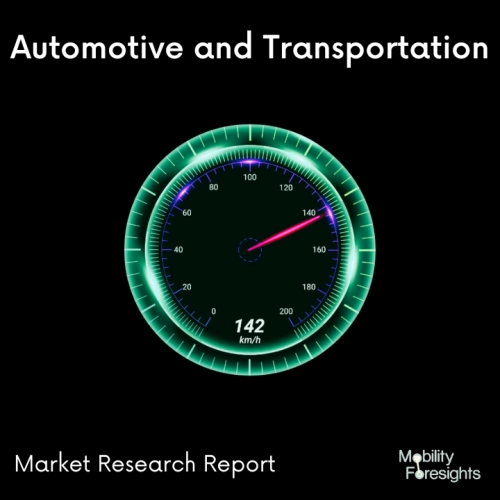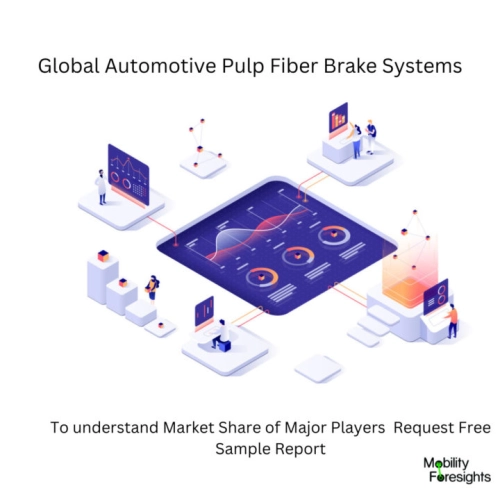
- Get in Touch with Us

Last Updated: Apr 25, 2025 | Study Period: 2023-2030
Mechanical pulp is a non-asbestos cellulosic fibre with a high heat absorption rate that can meet the requirements of high-quality brake lining.
Pulp fibre that has been defiberized and combined with other composite materials can produce fibre with a high fibre bonding strength, some friction materials, clutching, heat, and dust retention fibre that is free of asbestos fibre.
Asbestos fibre, which is known to cause cancer, is currently used as the major filler in car brake lining. The use of pulp fibre in a particular composition as a filler for brake linings has been the subject of a number of studies and evaluations.

The Global automotive pulp fiber brake systems accounted for $XX Billion in 2022 and is anticipated to reach $XX Billion by 2030, registering a CAGR of XX% from 2023 to 2030.
The goal of this method is to develop high performance friction materials out of composites made of aramid pulp and carbon fibre reinforcement.
The effects of carbon fibres and aramid pulps on the composites' tribological performance, mechanical characteristics, and thermal stability are examined.
One of the most crucial components of a car is the braking system. By converting kinetic energy into thermal energy through the friction of two surfaces, brakes are used to slow down or stop moving vehicles.
The typical operating temperature for the brake rotor in a personal vehicle's disc brake system is typically between 200 and 270 degrees Celsius, with a possible increase to 370 degrees Celsius.
The stiffness, strength, and tribological behaviour of friction composites are significantly improved by the addition of reinforcing fibres. 5-25% (v/v) of fibre components are typically present in commercial friction compounds.
Asbestos has been replaced in NAO FMs with a variety of reinforcing fibres to improve their mechanical, thermal, and tribological qualities, including aramid pulp, carbon fibre, ceramic fibre, glass fibre, and natural fibre.
Due to their exceptional qualities, including high strength (3.5 GPa), high modulus (345â520 GPa), great heat stability, and wear resistance, carbon fibres are now being used more and more in friction materials. Good mechanical and dynamic mechanical qualities can be found in carbon fibres.
| Sl no | Topic |
| 1 | Market Segmentation |
| 2 | Scope of the report |
| 3 | Abbreviations |
| 4 | Research Methodology |
| 5 | Executive Summary |
| 6 | Introduction |
| 7 | Insights from Industry stakeholders |
| 8 | Cost breakdown of Product by sub-components and average profit margin |
| 9 | Disruptive innovation in the Industry |
| 10 | Technology trends in the Industry |
| 11 | Consumer trends in the industry |
| 12 | Recent Production Milestones |
| 13 | Component Manufacturing in US, EU and China |
| 14 | COVID-19 impact on overall market |
| 15 | COVID-19 impact on Production of components |
| 16 | COVID-19 impact on Point of sale |
| 17 | Market Segmentation, Dynamics and Forecast by Geography, 2023-2030 |
| 18 | Market Segmentation, Dynamics and Forecast by Product Type, 2023-2030 |
| 19 | Market Segmentation, Dynamics and Forecast by Application, 2023-2030 |
| 20 | Market Segmentation, Dynamics and Forecast by End use, 2023-2030 |
| 21 | Product installation rate by OEM, 2023 |
| 22 | Incline/Decline in Average B-2-B selling price in past 5 years |
| 23 | Competition from substitute products |
| 24 | Gross margin and average profitability of suppliers |
| 25 | New product development in past 12 months |
| 26 | M&A in past 12 months |
| 27 | Growth strategy of leading players |
| 28 | Market share of vendors, 2023 |
| 29 | Company Profiles |
| 30 | Unmet needs and opportunity for new suppliers |
| 31 | Conclusion |
| 32 | Appendix |